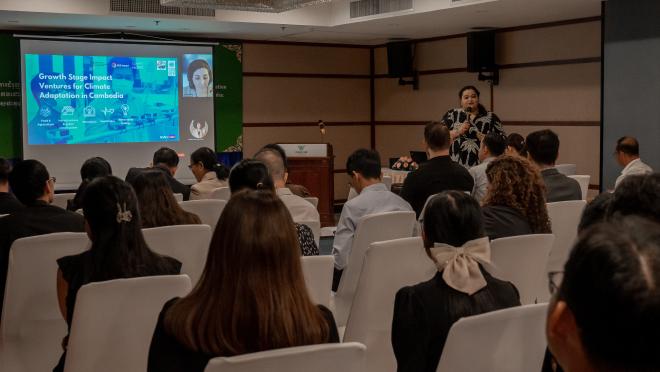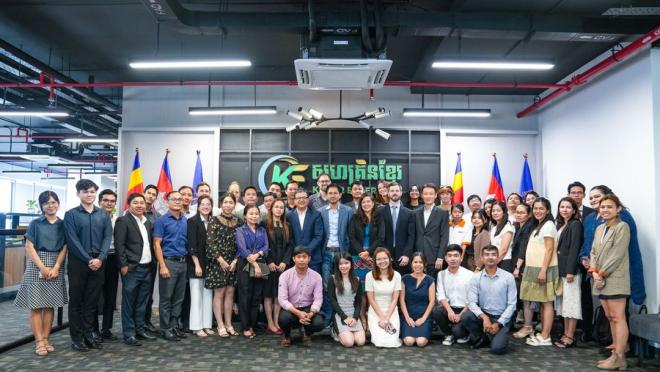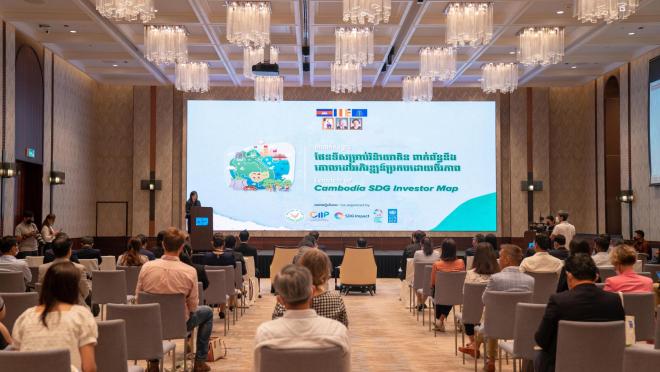Over the two decades before the COVID-19 pandemic, Cambodia underwent a significant transition, reaching lower middle-income status in 2015 and expressing the aspiration of attaining upper middle-income status by 2030. Driven by garment exports and tourism, Cambodia’s economy sustained an average annual growth rate of 7.7 percent between 1998 and 2019, making it one of the fastest-growing economies in the world.
In 2020, however, the crisis unleashed by COVID-19 negatively affected three main sectors of Cambodia’s economy, tourism, manufacturing exports, and construction, that contributed more than 70 percent of the country’s economic growth and provided 39 percent of its total paid employment in 2019.
Cambodia has adapted to COVID-19. Real growth is estimated to have reached 3 percent in 2021. The authorities have relaxed travel restrictions in an effort to sustain business activity. About 83 percent of the population have received two doses of COVID vaccines. Amid eased mobility restrictions, economic recovery is underpinned by a strong rebound in manufacturing and sectors such as agriculture. Meanwhile, the recovery of the service sector and, especially, tourism -- an important source of employment -- remains sluggish. Since Cambodia is an energy and food net importer, rising energy and food prices due to the war in Ukraine need to be addressed to ensure income levels and consumer confidence are maintained to avoid increase in poverty levels.
Cambodia has recently redefined the poverty line, using the most recent Cambodia Socio-Economic Survey for 2019/20, based on cost-of-basic need, and a common basket approach. Under the new national poverty line, about 18 percent of the population is identified as poor. Poverty rates vary considerably by area. The poverty rate is the lowest in Phnom Penh (4.2 percent), other urban areas (12.6 percent), and the highest in rural areas (22.8 percent).
Over the period 2009-2019/20, poverty rates declined by 1.6 percentage points per year, driven substantially by rising labor (especially wage) earnings. In addition, the scale up of social assistance to poor and vulnerable households, launched in June 2020, has moderated income losses due to the pandemic. The increase in the poverty rate in 2020 is projected to have been limited to an increase of 2.8 percentage points. The negative impacts of the pandemic on non-farm family businesses remain substantial, caused mainly by weak consumer demand. Nearly half of households report declines in income between December 2020 and March 2021. This suggests that a proportion of households that are negatively affected by COVID-19 continue to suffer from income loss, which could lead to an increase of poverty.
Cambodia has made considerable strides in improving health outcomes, early childhood development, and primary education in rural areas. Life expectancy at birth has risen from 58 years in 2000 to 70 years in 2020. The maternal mortality ratio per 100,000 live births has decreased from 351 in 2005 to 160 in 2017; the under-five mortality rate has decreased from 106.3 per 1,000 live births in 2000 to 26.6 per 1,000 in 2019; and the infant mortality rate has fallen from 78 per 1,000 live births in 2000 to 22.8 per 1,000 in 2019. In 2021, net enrollment rates for primary, lower secondary, and upper secondary sub-sectors reached 91.9 percent, 60.7 percent, and 32.2 percent, respectively. The net pre-primary education enrolment rate for five-year-olds rose from 24.6 percent in 2004 to 61.08 percent in 2021. As of 2020, 15 percent of Cambodia’s population (2.5 million people) did not have access to improved water, and 23 percent (3.8 million people) did not have access to improved sanitation.
Key reforms are needed for Cambodia to sustain pro-poor growth, foster competitiveness, sustainably manage natural resource wealth, and improve access to and quality of public services. Cambodia continues to have infrastructure gaps and would benefit from greater connectivity and investments in rural and urban infrastructure. Further diversification of the economy will require fostering entrepreneurship, expanding the use of technology, and building new skills to address emerging labor market needs. Accountable and responsive public institutions will also be critical. The quality of human capital will be of utmost importance to achieve Cambodia’s ambitious goal of reaching middle-income status by 2030.
The Royal Government of Cambodia has developed long-term development objectives, namely through the creation of the Cambodia Vision 2050 and Cambodia Sustainable Development Goals (CSDGs). Mid-term plans such as the Rectangular Strategy (RS) and the National Strategic Development Plan (NSDP) are used as policy instruments to achieve these long-term objectives. The Royal Government is committed to Cambodia’s transition to an upper-middle-income country by 2030 and a high-income country by 2050.
The Cambodia SDG Investor Map has been created to showcase business prospects with a supportive policy environment that can have a significant influence on sustainable development within the country. Located in the heart of the ASEAN, Cambodia is still perceived by many investors as a ‘frontier’ market that is smaller and less liquid than some neighbouring economies like Viet Nam. Challenges do exist, with VCs and PEs mostly reporting the lack of investible pipeline, lack of demonstrated success, and challenges in making investment exits (due to limitations of the local stock market), exacerbated by limited local expertise and capacity to assist with project sourcing and due diligence, making costs of investments very high.
However, an increasing number of opportunities are available in Cambodia for both small and large investors. The competitive advantages of the country, including that it is a small-sized market, has a central location in ASEAN, is a business-friendly environment with a young and tech-savvy population, and has a proven ability to leapfrog - as has been the case with mobile penetration and digital banking - make it an ideal base to run pilot projects that can then be rolled out throughout the region. Another interesting feature is the rise of local investment through private equity and angel networks that has the potential to build stronger foundations for local investment if properly supported.
Source: World Bank Country overview for Cambodia
UNDP report for the Cambodia SDG Investor Map
15



Food and Beverage, Infrastructure, Renewable Resources and Alternative Energy
0.594
How is this information gathered?
SDG Investor Maps employ an 8-step methodology, combining data research and stakeholder consultations to identify Investment Opportunity Areas (IOAs) and potential business models with significant financial and impact potential.
Disclaimer
UNDP, the Private Finance for the SDGs, and their affiliates (collectively “UNDP”) do not seek or solicit investment for programmes, projects, or opportunities described on this site (collectively “Programmes”) or any other Programmes, and nothing on this page should constitute a solicitation for investment. The actors listed on this site are not partners of UNDP, and their inclusion should not be construed as an endorsement or recommendation by UNDP for any relationship or investment.
The descriptions on this page are provided for informational purposes only. Only companies and enterprises that appear under the case study tab have been validated and vetted through UNDP programmes such as the Growth Stage Impact Ventures (GSIV), Business Call to Action (BCtA), or through other UN agencies. Even then, under no circumstances should their appearance on this website be construed as an endorsement for any relationship or investment. UNDP assumes no liability for investment losses directly or indirectly resulting from recommendations made, implied, or inferred by its research. Likewise, UNDP assumes no claim to investment gains directly or indirectly resulting from trading profits, investment management, or advisory fees obtained by following investment recommendations made, implied, or inferred by its research.
Investment involves risk, and all investments should be made with the supervision of a professional investment manager or advisor. The materials on the website are not an offer to sell or a solicitation of an offer to buy any investment, security, or commodity, nor shall any security be offered or sold to any person, in any jurisdiction in which such offer would be unlawful under the securities laws of such jurisdiction.






















